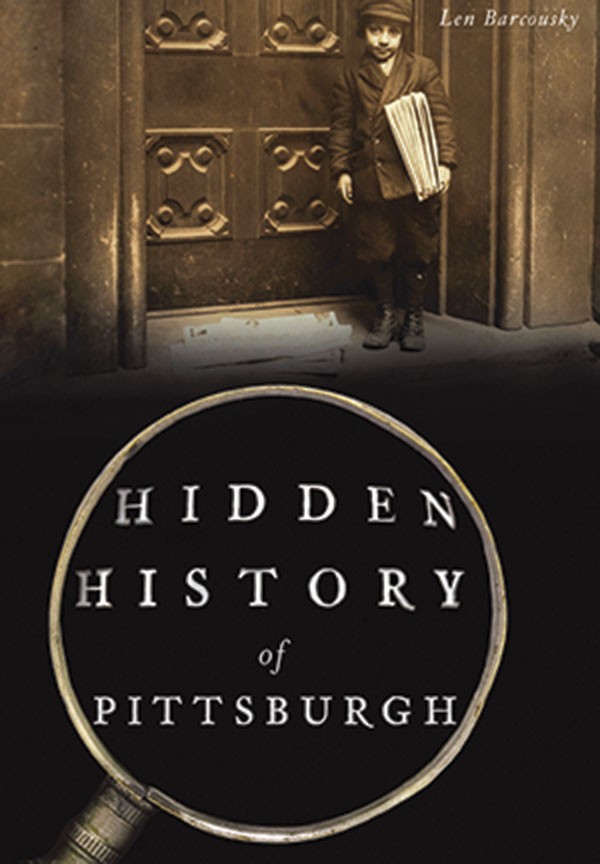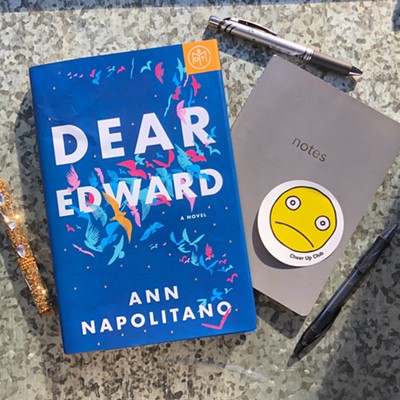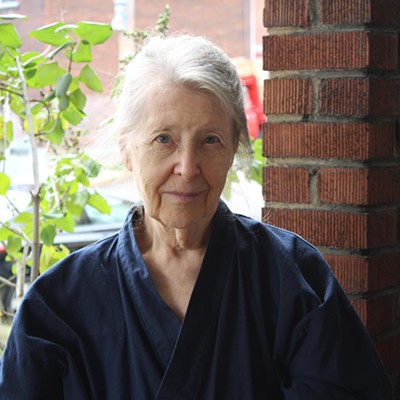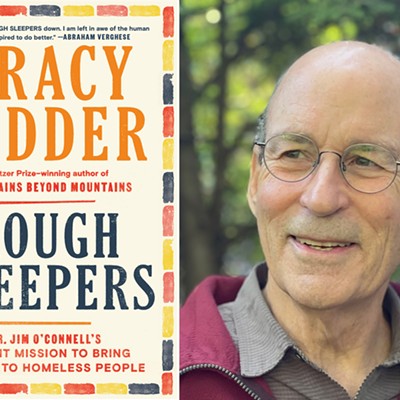Len Barcousky’s Hidden History of Pittsburgh edifies and amuses
History buff unearths little-remembered episodes and connections

Len Barcousky’s new book Hidden History of Pittsburgh (The History Press, $21.99) is a brisk little tome about lesser-known events in the Steel City’s past, as well as the region’s connection to history at large. Barcousky, who retired this past fall as a reporter at the Pittsburgh Post-Gazette (where I am also a former staffer), is a history buff’s history buff, someone with a real dedication to putting history in context in order to better understand it.
“Most stories, especially in the age of the Internet, have the lifespan of a mayfly,” Barcousky writes. In internet parlance, Hidden History is 149 pages of ICYMI (in case you missed it), with chapter titles like “Fighting for Equality” and “Everybody Comes to Pittsburgh.” That latter chapter has anecdotes about visits to Pittsburgh by Charles Dickens, Albert Einstein, native daughter Nellie Bly and Mark Twain.
But it’s the stories of lesser-known Pittsburghers caught in historic events that are the best parts of Hidden History. There’s World War I veteran Donald C. Jefferson, the first black business-owner in East Liberty, who stood up to Jim Crow while on a train to a South Carolina army camp. And Betty Jean McCord, an Aspinwall High School senior who won a trip to Hollywood in 1940 and met big-name stars including Indiana, Pa., native Jimmy Stewart.
Here’s my only quibble with the book. Barcousky’s primary source for Hidden History is the Post-Gazette’s own formidable and rich archive, presented as a mostly irrefutable source. While citing newspaper reports is a completely valid and time-tested way to conduct historical research, I wish there were more supporting material from other sources. Though admittedly, it’s entirely likely those sources are hard to find, if they exist at all.
I have no cause to question the veracity of any of the historical accounts presented. However, based on personal experience, I do disagree with the way Barcousky portrays the P-G’s content-management system and its relatively new printing press as “cutting edge.” It makes me wonder at what point presenting any newspaper’s reporting as a primary source shifts from being history to being public relations.
Still, after reading Hidden History, I was left with the feeling that there’s still a lot of Western Pennsylvania history yet to be uncovered. Hopefully, Barcousky has more stories to share.
“Most stories, especially in the age of the Internet, have the lifespan of a mayfly,” Barcousky writes. In internet parlance, Hidden History is 149 pages of ICYMI (in case you missed it), with chapter titles like “Fighting for Equality” and “Everybody Comes to Pittsburgh.” That latter chapter has anecdotes about visits to Pittsburgh by Charles Dickens, Albert Einstein, native daughter Nellie Bly and Mark Twain.
But it’s the stories of lesser-known Pittsburghers caught in historic events that are the best parts of Hidden History. There’s World War I veteran Donald C. Jefferson, the first black business-owner in East Liberty, who stood up to Jim Crow while on a train to a South Carolina army camp. And Betty Jean McCord, an Aspinwall High School senior who won a trip to Hollywood in 1940 and met big-name stars including Indiana, Pa., native Jimmy Stewart.
Here’s my only quibble with the book. Barcousky’s primary source for Hidden History is the Post-Gazette’s own formidable and rich archive, presented as a mostly irrefutable source. While citing newspaper reports is a completely valid and time-tested way to conduct historical research, I wish there were more supporting material from other sources. Though admittedly, it’s entirely likely those sources are hard to find, if they exist at all.
I have no cause to question the veracity of any of the historical accounts presented. However, based on personal experience, I do disagree with the way Barcousky portrays the P-G’s content-management system and its relatively new printing press as “cutting edge.” It makes me wonder at what point presenting any newspaper’s reporting as a primary source shifts from being history to being public relations.
Still, after reading Hidden History, I was left with the feeling that there’s still a lot of Western Pennsylvania history yet to be uncovered. Hopefully, Barcousky has more stories to share.


















